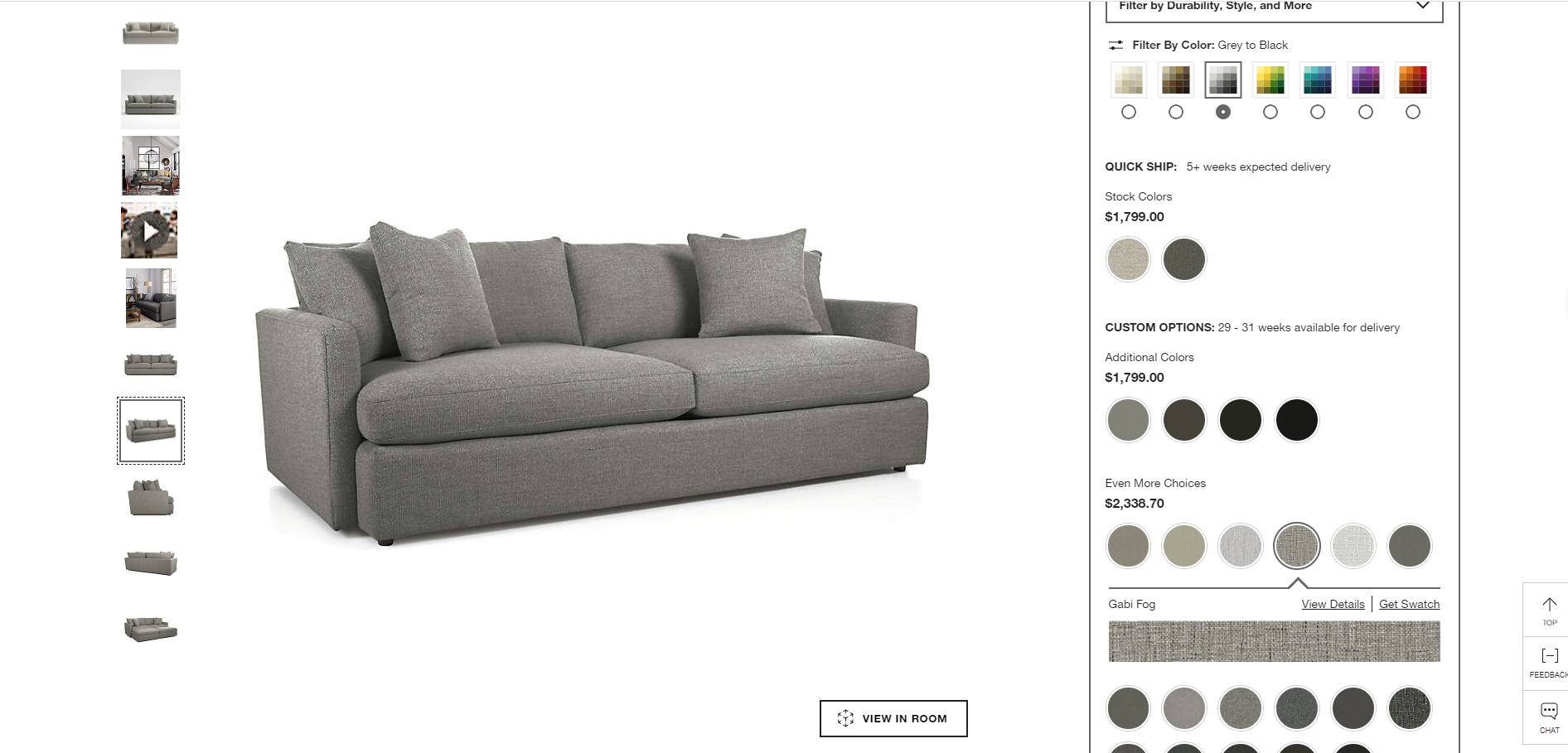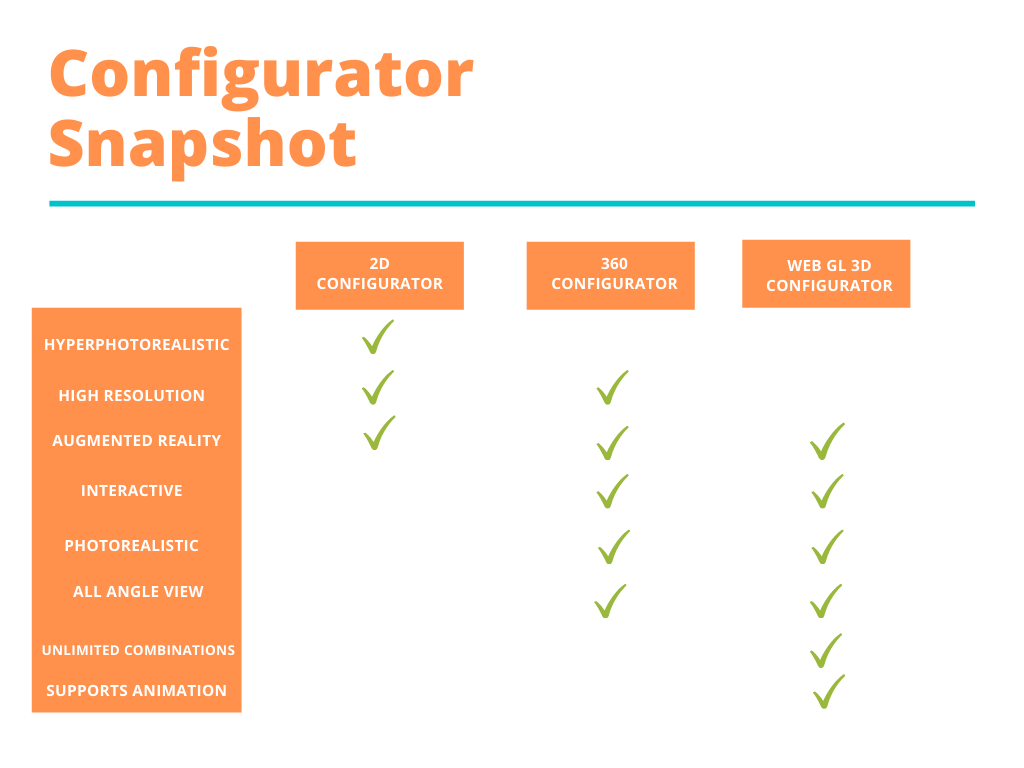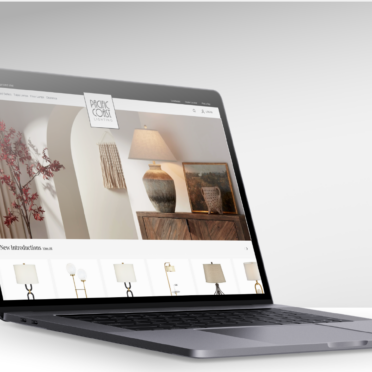Visual Configurators in eCommerce
The eyes.
Shakespeare said that the eyes are the windows to the soul. And it’s true because your eyes are the key to building desire. Engrossing yourself in a book, picking out an outfit, engaging with media, and anything else you do throughout your day. Science confirms that your eyes account for 90% of the information received by your brain, so it’s perfectly reasonable to say that your shopping experience is 90% reliant on your eyes.
Visualization is the key to making any decision, especially when purchasing on an eCommerce website. The less you see, the more you lose interest, and it’s one of the main reasons why online businesses lose potential customers.
Giving your customers a solution to an age-old problem is the key to securing and continuing to build their loyalty. But unfortunately, a lot of online businesses miss the mark. Taking great display pictures and having a trendy public figure as a spokesmodel is terrific, but customers undoubtedly want the full details on what they’re getting. And the best way to give them this knowledge is through Visual Configuration.
What is Visual Configuration?
Visual Configuration is the process of selecting and changing design features on a product on an eCommerce website. Simply put- customers make the changes and see them in real-time. That way, they’re able to be completely confident while having absolute control over the decision they’re making.
A few types of software can be added to showcase the various options offered by an eCommerce business.
Why should you use Visual Configurators in your eCommerce business?
I’ve mentioned this before; Visualization.
And to take it a step further, interaction, delight, competition. Adding Visual Configurators to your eCommerce business can benefit you in more ways than one. Quite notably with a definitive increase in customer retention and online sales.
The harsh truth of having an eCommerce business is that you’re unable to take photos for all or, at times, any of your products. And that’s where Visual Configurators come in. With the software, you’re able to create digital representations of your products and all of the options available to your customers. Giving them the freedom to browse and ultimately select the option that’s best for them.
Visual Configurators allow customers to change, reshape, customize, personalize and ultimately design a product that is uniquely theirs. Adding the key benefit of being able to see every single aspect of the changes applied right in front of them.
Which Configurator best suits your business?
With more than a decade of innovation, Configurators have come a long way. With the enhancement of bandwidth, people are browsing and consuming online information faster than ever. According to (Akaimai), bandwidth in 2009 was a mere 3.8 Mbps compared to the year 2019, which was at 96.25 Mbps on avg. That’s an over 2000% increase. It makes sense that anything online now has higher usability than it did over ten years ago.
This links directly to Configurators.
Faster internet speeds mean faster loading on product renders, higher resolution images, and speedy visualization of applied changes. It’s absolutely a no-brainer why Configurators are now a dominant and ravaging force in the eCommerce industry.
Let’s get to know some of the Configurators.
The first is the 2D Visual Configurator.
It is the simplest and most cost-effective. It’s lightweight, has a hyper photorealistic display quality, and allows for minor changes to the product. Meaning if it’s just color/texture options that are available, the 2D configurator is the best choice.
This Configurator comes with limitations. Businesses with an excessive range of configurable options will find that rendering costs get much higher as their number of purchasable options grows.
With that in mind, if you’re a company that offers products with a fair range of texture options and not any notable physical modifications, then this is perfect for your business. It’ll give you the ability to focus on offering the best visuals to your customer while showing them the options you offer.


.
The next is the 360 Visual Configurator.
Though quite similar to the 2D Configurator, the 360 allows for a full 360-degree view of the product by stitching together a host of different images from different angles (minus any above or below). This makes the product rotatable so that a customer can see all the changes they’ve made in one seamless rotation.
However, it also cannot be animated. Meaning objects which have moveable parts cannot be manipulated. Doors on cabinets, or folding beds, for example, won’t be shown in continuous motion. Thankfully, the AR capabilities, paired with the hyper photorealistic quality, give customers a stunning and interactive experience. Thus making up for the lack of animation.
This Configurator is ideal for a business that needs its customers to understand the product features fully but doesn’t allow for shape customization.


The final and possibly most immersive configurator is the WEB GL 3D Configurator.
It boasts the best kind of technology for businesses with products that allow for changes in shape and carries an expansive collection of options. Product combinations that can get to thousands or tens of thousands, millions even, are best built using this software since configurations are virtually limitless and will give your customers options beyond their comprehension. When using WEB GL 3D, customers can see the product with physical shape changes applied in real-time.
And that’s not all; products that consist of moving physical parts can be animated.
For Example:
That new bathroom cabinet that’ll be installed near a shower, your customer wants to know how far back the door goes. Well, with this Configurator, they can. Just the click of the button allows them to see the cabinet with open doors. A bonus, once they’re done applying changes to the product, they can view that cabinet where it will be ultimately placed using the AR feature, allowing them to check for a more accurate fit, as well as the color and height.
On the reverse side, due to the reshapable features of the WEB GL 3D Configurator, it lacks the hyper photorealistic display qualities present in the Configurator mentioned earlier.
Check out this WEB GL 3D configurator


Benefits of using Configurators
Revolutionizing modifications
Visual Configurators have revolutionized the traditional buying experience. Before, the only way to personalize a product was to go through a sales rep, working with them at a desk as they showed you the different options for an available product. And if the customer wanted modifications, it took a while to see the renders. But with Configurators, customers can skip the middle man, the wait time, and the back and forth and create the product they want on their own in little to no time.
Increase Sales
According to Forbes, using Visual Configurators can significantly boost sales and increase conversions by up to 40%. Having a Configurator allows your customers to spend their time productively finding the option that suits their needs, which means a decrease in cart abandonment and a higher chance that your customers will make a purchase.
Buyer confidence
Which company would you choose to buy from?
One that allows you to see the changes you’re applying to a product you’re going to buy? Or one that only allows you to see a standard product image as a representation of what you’re going to buy?
The answer? You guess.
Giving your customers the ability to visualize what they’re considering builds buyer confidence. Purchasing a large item online is often met with anxiety as it’s hard to get a good look and properly customize parts. But with a Configurator, customers can view all of their changes on the fly, giving them complete confidence over their decisions and allowing them to feel more comfortable placing their order. In the end, they’re able to build what they want and buy what they want.
Remain competitive.
You want your customers to choose you, always. But in an ever-evolving digital world filled with like-minded competitors, Visual Configurators will keep your business ahead of the curve. Offering customers solutions in different forms ensure that they’ll seek out your business to answer their problem. And there’s more to this. By giving your customer unique solutions, they’re more likely to share their experiences with friends and family, and in turn, name your company as the one to find answers with. This word-of-mouth practice is an invaluable tool when it comes to staying ahead of the competition.
Cross-Platform Compatability
According to csoinsights.com, 70% of buyers self-serve through their phones, laptops, or tablets. Meaning they spend most, if not all of their time, making decisions on their device without the help or professional input from sales personnel.
For this reason, it’s essential to give customers the same immersive experience through a variety of devices. Allowing the same level of visualization across all device types ensures that you’re serving your customers in the way they desire, no matter what device they’re using.


These shots were taken on different devices from the same automobile customizing company 3Dtuning. However, both devices allowed for seamless modification while still maintaining quality.

Ways to implement a Configurator
Now that you have this information, how do you implement a Visual Configurator to help your business?
Should you build a Configurator? Should you find a plugin that you can add to your site that can work for your business? Those are just a few questions to get your mind pointed in the right direction. Generally, there are two main options to implementing a Configurator on your website;
1. Pay to License and Host
This option entails paying an ongoing licensing fee to a company that will install the Configurator on your website. That’s great, considering there will be little to no additional programming necessary. However, you never technically own your assets as they’ll be hosted by the vendor. And you must continue to pay the licensing fee, which does add up over time.
In addition, Licensing fees range depending on traffic to the configurable products, and also the number of products and options. Remember that you don’t own your code when licensing. And also you and the vendor will be partnered for life.
2. Pay a one-time fee
The one-time fee option allows you to design and customize a solution specific to your business requirements. That makes it possible for you to provide the most refined solution to your customers. Though with a higher upfront cost than the licensing counterpart, those costs will be significantly lower over a short time compared to continuously paying a licensing fee.
The most important thing about this option is that the Configurator and the assets will be owned by you. Meaning you can make any changes you deem necessary.
In the end, your goal is to provide your customers with solutions that leave them feeling satisfied. And the best way to do so is to offer them an innovative and progressive way to find what they need.
Visual Configurators have grown, evolved, and cemented their place in the eCommerce industry; it’s time to add your business to the list that customers brag about by getting in contact with Jola Interactive, a North American leader in Business solutions through the use of Visual Configurators.







